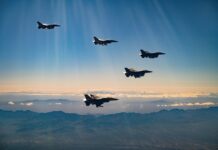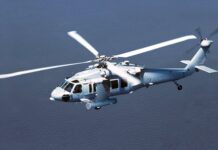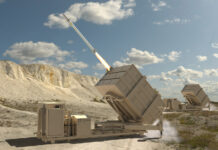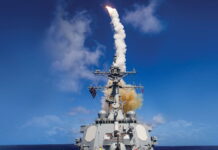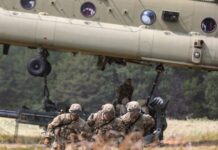Raytheon Missiles & Defense, in partnership with Northrop Grumman, has successfully completed its second flight test of the scramjet-powered Hypersonic Air-breathing Weapon Concept (HAWC) for the DARPA and the US Air Force, Northrop Grumman writes in a press release.
This flight test applied the data and lessons learned from the first flight to mature the operationally relevant weapon concept design. According to the company, the test met all primary and secondary objectives, including demonstrating tactical range capabilities.
During the flight test, after releasing HAWC from an aircraft and accelerating to hypersonic speeds using the scramjet engine, the vehicle flew a trajectory that engineers designed to intentionally stress the weapon concept to explore its limits and further validate digital performance models. These models, grounded in real-world flight data, are being used to accurately predict and increase performance as the system matures.
Scramjet engines use high vehicle speed to forcibly compress incoming air before combustion to enable sustained flight at hypersonic speeds – Mach 5 or greater. The system was designed to use a widely available hydrocarbon fuel, and since it uses air for combustion, it does not have to carry the added weight of an onboard oxidizer. By traveling at these speeds, hypersonic weapons like HAWC can reach their targets more quickly than traditional missiles, allowing them to potentially evade defence systems.
Northrop Grumman Partnership With Boom
A new supersonic aircraft tailored to provide quick-reaction capabilities to the US military and allies will be offered through a collaborative agreement between Northrop Grumman Corporation and Boom Supersonic, Northrop Grumman writes in a press release.
The agreement to together propose special mission variants of Boom’s OVERTURE supersonic aircraft was finalised at the Farnborough International Air Show.
Designed to carry up to 80 passengers at twice the speed of today’s airliners, a special mission variant of OVERTURE is said to have the potential to support government and military missions that require rapid response. According to the company, the aircraft could be used to deliver medical supplies, provide for emergency medical evacuation or survey areas faster than conventional aircraft. The special mission OVERTURE variant could also be used to coordinate other aircraft and ground assets in a variety of scenarios. Designed and built in the United States, the first OVERTURE aircraft is scheduled to be in production for commercial use in 2024, start flight tests in 2026 and begin carrying passengers in 2029.
JR






